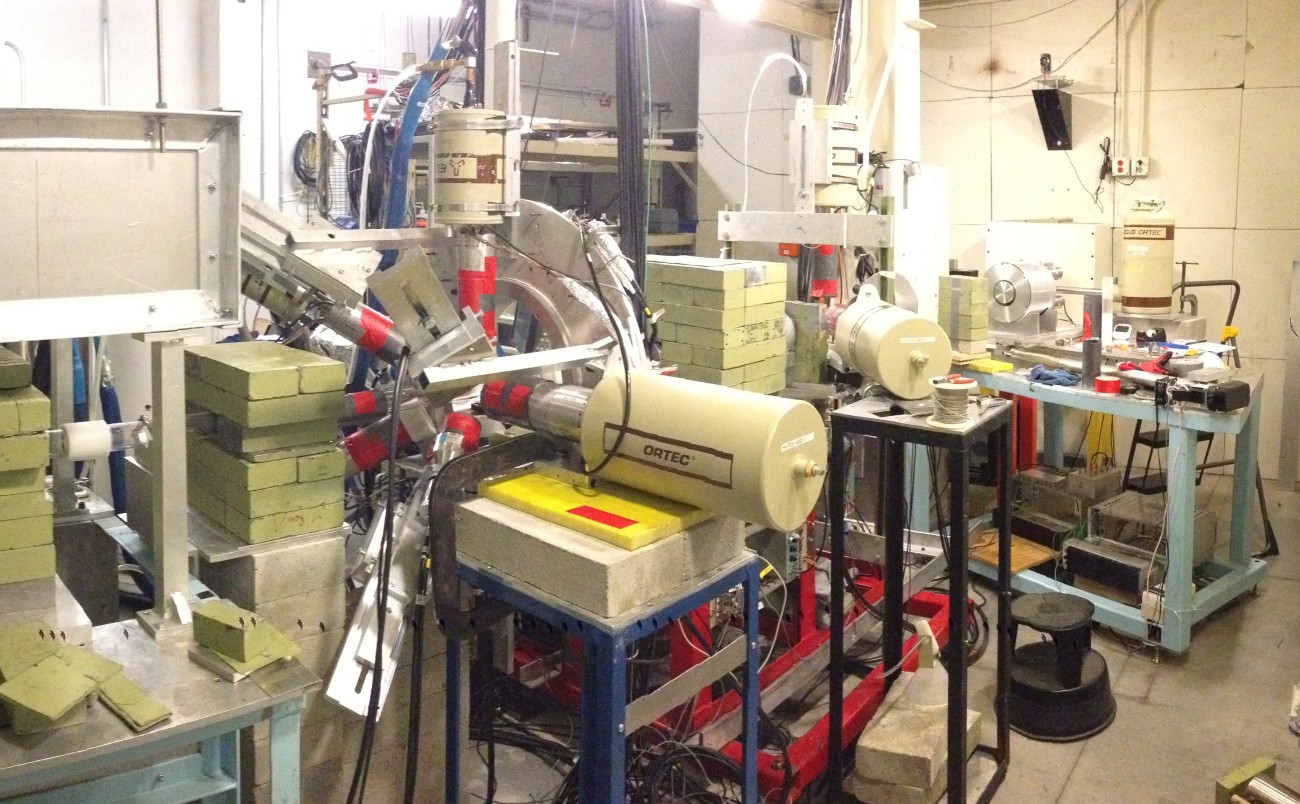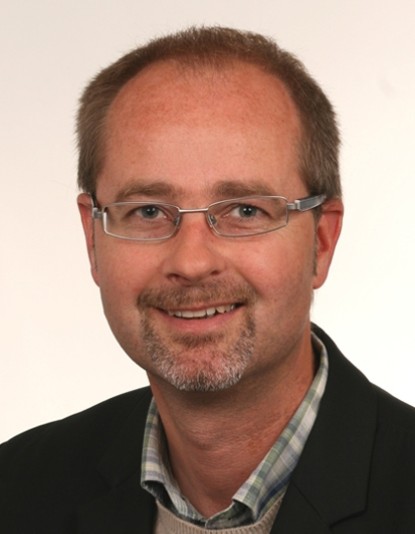Accelerator Physics
The S–DALINAC consists of twelve superconducting 20 cell niobium cavities, operated at 2 K at a frequency of 2.9975 GHz. With a design accelerating gradient of 5 MV/m and a design quality factor of 3·109 in cw operation, the final energy of the machine is 130 MeV which is reached when the beam is recirculated twice. The first set of cavities was built in the 80’s at Interatom using low RRR material, so the observed performance regarding the gradient and the quality factor was rather poor. Accordingly, a second set of cavities was ordered in the 90’s made from RRR 300 material. These cavities, welded at Dornier, are used since then. All of them reach the design gradient, some exceeding it by more than 50 %. Unfortunately, the accelerator did not benefit from this improvement: Due to the limited refrigerator power of some 100 Watt and the rather low Q of the cavities (typically below 1·109) the cavities had to be operated below their maximum gradients. The final energy of the accelerator in cw operation therefore never exceeded 90 MeV. Consequently, reaching the design energy of 130 MeV is still a goal. Many measures towards achieving higher quality factors have been taken in the past laying the foundation of the SRF research conducted in house. Currently, the focus lies on the heat-treat cavities in our UHV furnace. The procedure, firing the cavity to 850 C aims to remove residual hydrogen known as a reason for a large degradation of the cavity quality factor, commonly referred to as Q-Disease. Additionally, improvements of the magnetic shielding inside the accelerator cryostat are performed, reducing the amount of magnetic flux freezing during cool-down.
The beam dynamics of the S-DALINAC is rather complicated. As a recirculation Linac, the machine is neither a single Linac nor a circular accelerator: it combines features of both types of machines in a microtron-like manner. Therefore, investigations of the longitudinal working point are conducted. From a theoretical model, a reduction of the energy spread is predicted and first signs of this existence have been observed many years before- a final prove is one of the major steps lying ahead.
In addition, several machine lattice upgrades are underway, requiring a detailed recalculation of the beam dynamics. One of this is the installation of a third recirculation to boost the accelerator energy, allowing to use the energy gain of the main linac another time, which would lead roughly to 120 MeV in cw operation. The installation of an additional recirculation has become possible recently as the old beam-line to the undulator (as part of the Darmstadt Free Electron Laser facility) has been de-commissioned in 2006. A preliminary design study undertaken so far showed the option to build the new recirculation in between the two existing ones. A considerable advantage of this layout is that most of the existing beam-line and magnets can be used again (even so the energy of the beam changes). Beside the 4 new bending magnets to form the additional recirculation path, only the separation and combining magnets at the beginning and the end of the recirculations have to be replaced.
An other upgrade, involving beam-dynamics issues is the installation of two scraper systems. The injector arc scraper system will remove the low energy tail of the beam injected into the main linac. Currently, the dynamics of the injector bending section is optimized to allow the installation of the recently designed collimator.
After three passes through the linac (housing 8 independently controlled accelerating cavities) a transversal scraping, combined with an additional longitudinal collimation will ensure the highest beam quality by removing any beam halo. The system proposed will be placed in the extraction beam line, the lattice and the dynamics of which has to be adapted. In addition, the longitudinal scraping can further reduce the energy spread of the beam at the cost of beam current. As the dispersion is maximized in this section, a more efficient energy collimation compared to the existing system can be assured, allowing an energy definition of as low as 10 keV being a key figure for several highly demanding experiments proposed within the CRC.
Remote control, data logging and active feedback loops are the essentials of a successful accelerator operation. Many years, the control system to do this was based on in-house developments. With the replacement of the low-level RF control, the transition to the EPICS system (developed in a worldwide collaboration of various accelerator institutes) was started for the slow data.
The controller boards are connected to a standard PC server via CAN bus. This interface is used to monitor and adjust all slowly varying (e. g. by user interaction) parameters of the control algorithm and the hardware. The microcontroller that connects the FPGA boards to the CAN bus runs Nut/OS, an open source real-time operating system providing cooperative multi-threading. The PC runs Linux and an EPICS IOC that is hooked up to the CAN bus via a device support that uses the Socket- CAN network stack included in recent Linux kernels (since 2.6.25). SocketCAN provides access to the CAN bus via network devices (BSD sockets) which can be accessed by multiple applications at the same time (e. g. the IOC and a CAN sniffer). Furthermore it acts as an abstraction layer that makes the device support independent of a specific CAN card or hardware vendor (all all CAN cards having a SocketCAN driver are supported). All together the IOC currently provides several thousand records for all 16 RF channels.
The operator interface has been implemented with Synoptic Display Studio. Currently, the transition of the beam line magnet power supplies to an EPICS IOC is being programmed. One major issue is the implementation of the hardware turn-knobs being available for set-parameter variations within the in-house control system allowing the operator to adjust magnet parameters easily.
So far, data logging is achieved only for a limited set of parameters using a non-EPICS data base. Nevertheless, this self-made system provides a web interface, allowing easy access to the current and recent data. The transition of this system will be a future activity.


